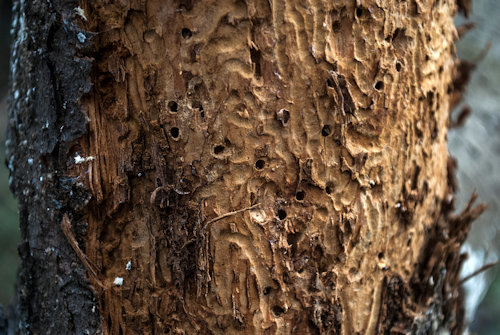In the United States alone, there are over 600 species of bark beetles.
These pests play an important part in natural ecosystems, but they also cause major damage. Because they enjoy living in dead or dying trees, many bark beetles kill off large amounts of our friendly green giant friends to make their homes.
This sounds scary, right? Imagine having bark beetles in your own yard. You’d have to take quick action to save yourself from a mass infestation.
Below is a guide on the Southern Pine Bark Beetle. We’ll show you how to identify the threat and what to do about it.
What Is the Threat?
As mentioned in the introduction, bark beetles enjoy living in dead and dying trees. They’ll kill off trees to make their environment a cozy home.
When they find a living tree, the beetles dig through the protective outer bark layers. They’ll then lay eggs in the inner layers. For nutrients, they feed off the tissue of the tree, leaving it to die.
Unfortunately, climate change is only loosening our grips on Pine Bark Beetle control.
Where Is the Threat?
Specifically, as we mentioned, the threat lies in the inner layers of a tree’s bark.
Beetles are attracted to fir, pine, spruce, and cedar trees. If you have any of these trees in your yard, do what you can now to prevent Pine Bark Beetle infestations.
Do you have trees in your backyard suffering from droughts and low nutrients? Keep an eye on those too. Beetles enjoy building homes in trees that are on the cusp of losing a life.
Common Symptoms of Southern Pine Bark Beetle Infestations
Get up close and personal with your trees to look for holes in the bark. These holes are hard to spot so look closely. You’ll also want to look for pitch tubes coming out from the tree, and these typically look like small dollops of sap.
Glance up at the top of your tree. Conifer trees with needles will often start turning brown at the top in the case of an infestation. This brown color will move down as the infestation worsens.
What Do I Do?
There are Pine Bark Beetle treatment options available!
If you have the tools and room to do such, cut down the infested trees. Carefully burn them in a controlled fire to stop the spread.
Douse your trees in an insecticide to kill off the beetles. The earlier you apply the insecticide, the better.
Is the infestation out of control? Call a professional pest control company to do the dirty work. Make the call before these naughty beetles make it into your home!
Stop the Spread: Southern Pine Bark Beetle
No one looks at a single beetle and thinks of the damage it can cause. However, the damage becomes clear when one beetle turns into hundreds.
Stop the spread of the Southern Pine Bark Beetle by knowing what they are, what they can do, and how to stop them. Rely on a local pest control company for help.
If you’re located within the Southern Maryland and Northern Virginia region, you can rely on the help of Planet Friendly Pest Control. Reach out today for a free quote.
NEED HELP?
If you live in Southern Maryland, or Northern Virginia
FIND YOUR SOLUTION HERE
People, Pet & Pollinator Safe! Pest control for people who care.
